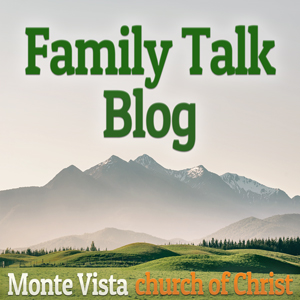When I first started leading songs in public worship, I was advised to pick songs that I knew very well. That translated to “lead the songs we always sing.” New songs were not frowned upon, just not liked by many in the congregation. Through meetings with other brethren, different songs were added to the “approved” list. Many of the songs in the hymnals from the 1920s to the 1940s were questionable as to their being scriptural. Songs like “Little Brown Church in the Valle” were more about being drawn to a remembered building than to God. Then in the early 1950s, a significant effort began to make our song selection coincide with Bible words and teaching. It became customary to sing hymns that included scripture in the song’s lyrics. The requests for specific selections became more in line with bible studies and sermons preached. That placed a new requirement on song leaders to learn and teach the songs used in worship.
By 1980, R. J. Stephens’ book, “Hymns for Worship,” provided many new hymns and spiritual songs based on scriptures. To help learn these, many of us sat at R. J.’s feet to learn the new music and hear sermons on the scriptures the songs embraced. We also had tapes that we could review and sing along with while traveling or studying. The main concern with that, and other new songbooks, has been the desire to conform to the Bible teachings.
The songbook we use at Monte Vista was prayed over and worried about as many faithful brethren put it together. There are at least three times the number of songs available, but that would not fit in the pages of a book that is comfortable to hold. Some are disappointed that old songs from “Sacred Selections” are omitted. Some want songs that are in “Songs of Faith and Praise.” Hard decisions were made for each songbook, and still, there are selections no one sings in the assembly.
One older brother at a congregation I worked with while still in the Air Force offered this advice. He said, “We don’t sing any Stamps-Baxter songs, and we do not shout Amen.” Many there considered the tempo of the songs inappropriate for worship, and vocal response to words of Truth by the preacher disrupted the sacred occasion.
Another congregation I worked with worshiped with such joy the songs flowed from the heart without necessarily following the notes or tempo in the book. The attention and encouragement to my preaching with “amen” and “that’s right brother” made me feel refreshed and ready for the challenges of the week ahead.
The majority of brethren are somewhere between these two extremes. Most share the thoughts of David as he said, “I was glad when they said to me, ‘Let us go to the house of the LORD'” (Psalms 122:1). At that time, the temple had not been built. But God chose to place His name there, and therefore meet with His children in Jerusalem, and the temple was planned. Today, God is with His children continuously but communes with them during the assembly. Words fail to define the joy, happiness, warmth, and love flowing among the saints who worship together. The joy that we have salvation. The happiness to be with fellow Christians. The warmth of family and friendship working together. The love from heart to heart and shared with Christ, The Holy Spirit, and a loving Father.
Some people prefer that everyone sings the main part of the song without harmony. They feel that singing the harmony parts leads to individual voices standing out from the group—others like the sound of harmony, sometimes more than the lyrics. But if we put our likes and dislikes aside and remember that God is our audience, we will see it is Him we must please. Paul said, “What is the outcome then? I will pray with the spirit and I will pray with the mind also; I will sing with the spirit and I will sing with the mind also” (1 Corinthians 14:15). Understand the words we sing and the way we sing them to God, not to ourselves. His are the ears we must please, and His are the desires we must match with our own.
Paul’s letters provide the reasoning for singing psalms, hymns, and spiritual songs. Singing allows us to celebrate praises to God while energizing our minds with the wonders of His majesty and Truth. The mind must be active in singing, helping the songs guide others in understanding and worship. The words sung must be clear and distinct to be understood by those present. Singing to God is the main requirement. But teaching each other, or reminding each other, is important also.
Some feel they cannot sing and do not. However, Paul said to everyone, be sober and speak “to one another in psalms and hymns and spiritual songs, singing and making melody with your heart to the Lord” (Ephesians 5:19). Learning the poetic meaning of the words, the timing, and the notation of songs, make singing a most productive part of worship. It can be both instructive and impressive. It uses the sweet tones of melody and harmony to “impress” sentiment on the heart.
The singing voice is one of God’s most beautiful gifts. Do you use yours wisely to praise Him?
